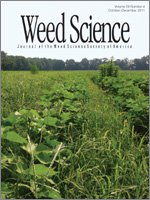Auxinic herbicides are widely used for control of broadleaf weeds in cereal crops and turfgrass. These herbicides are structurally similar to the natural plant hormone auxin, and induce several of the same physiological and biochemical responses at low concentrations. After several decades of research to understand the auxin signal transduction pathway, the receptors for auxin binding and resultant biochemical and physiological responses have recently been discovered in plants. However, the precise mode of action for the auxinic herbicides is not completely understood despite their extensive use in agriculture for over six decades. Auxinic herbicide-resistant weed biotypes offer excellent model species for uncovering the mode of action as well as resistance to these compounds. Compared with other herbicide families, the incidence of resistance to auxinic herbicides is relatively low, with only 29 auxinic herbicide-resistant weed species discovered to date. The relatively low incidence of resistance to auxinic herbicides has been attributed to the presence of rare alleles imparting resistance in natural weed populations, the potential for fitness penalties due to mutations conferring resistance in weeds, and the complex mode of action of auxinic herbicides in sensitive dicot plants. This review discusses recent advances in the auxin signal transduction pathway and its relation to auxinic herbicide mode of action. Furthermore, comprehensive information about the genetics and inheritance of auxinic herbicide resistance and case studies examining mechanisms of resistance in auxinic herbicide-resistant broadleaf weed biotypes are provided. Within the context of recent findings pertaining to auxin biology and mechanisms of resistance to auxinic herbicides, agronomic implications of the evolution of resistance to these herbicides are discussed in light of new auxinic herbicide-resistant crops that will be commercialized in the near future.
Nomenclature: Auxinic herbicides; dominant trait; evolution of resistance; fitness cost; herbicide-resistant crops; mode of action; mechanism of resistance; plant growth regulator; recessive trait.





